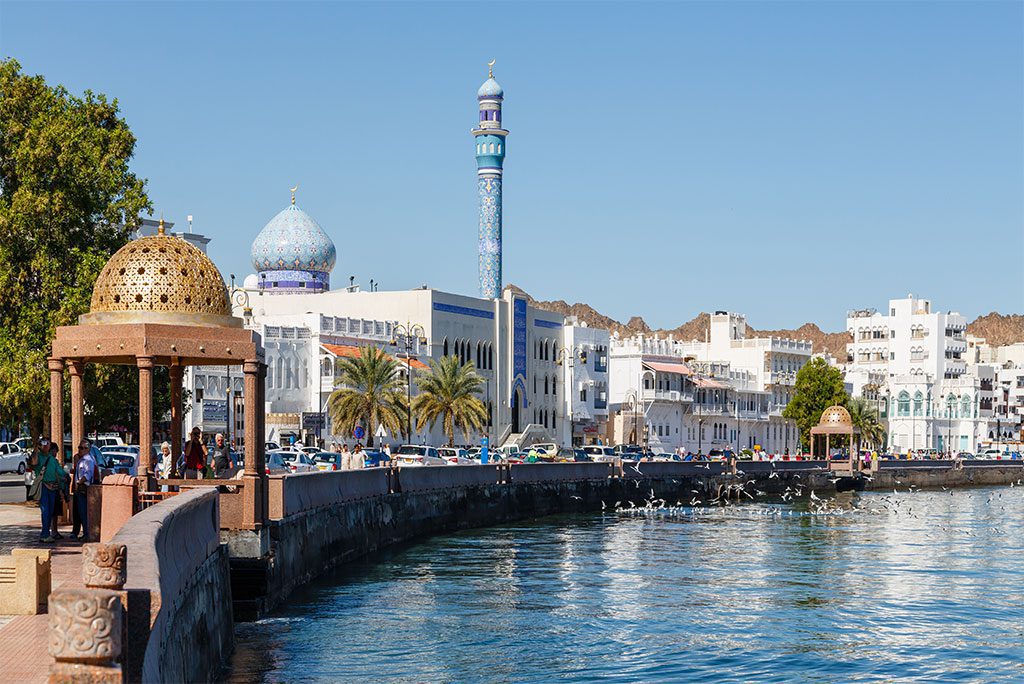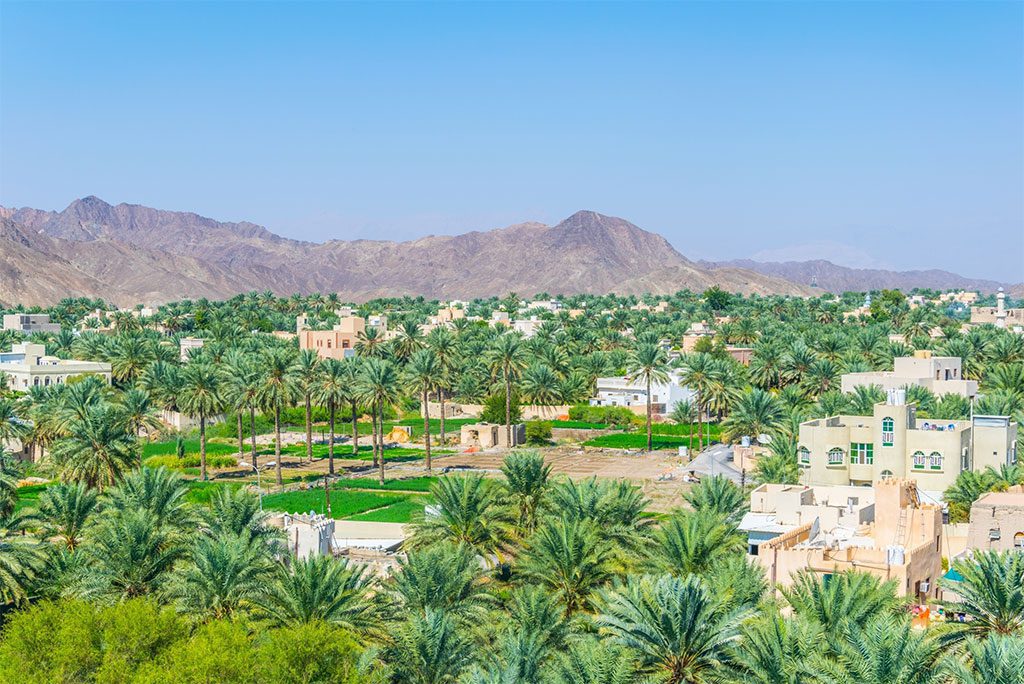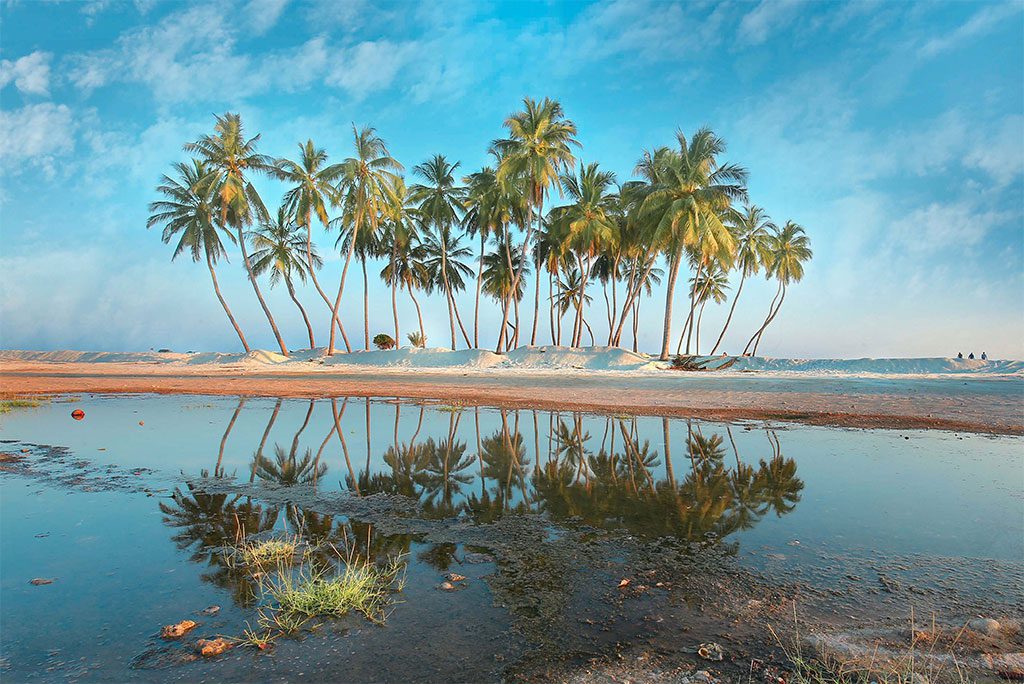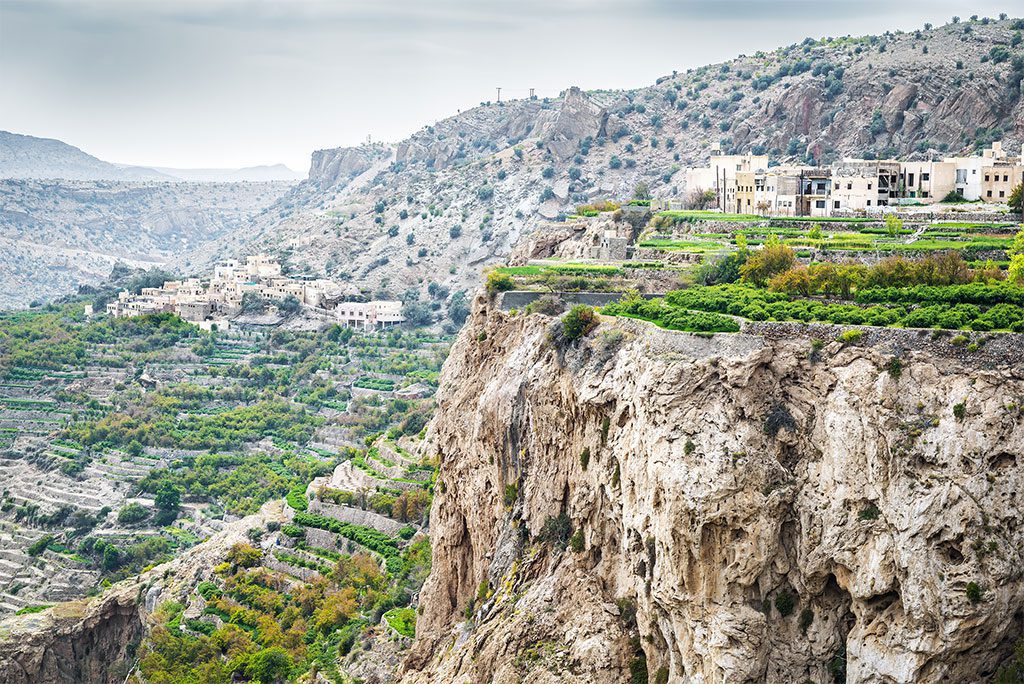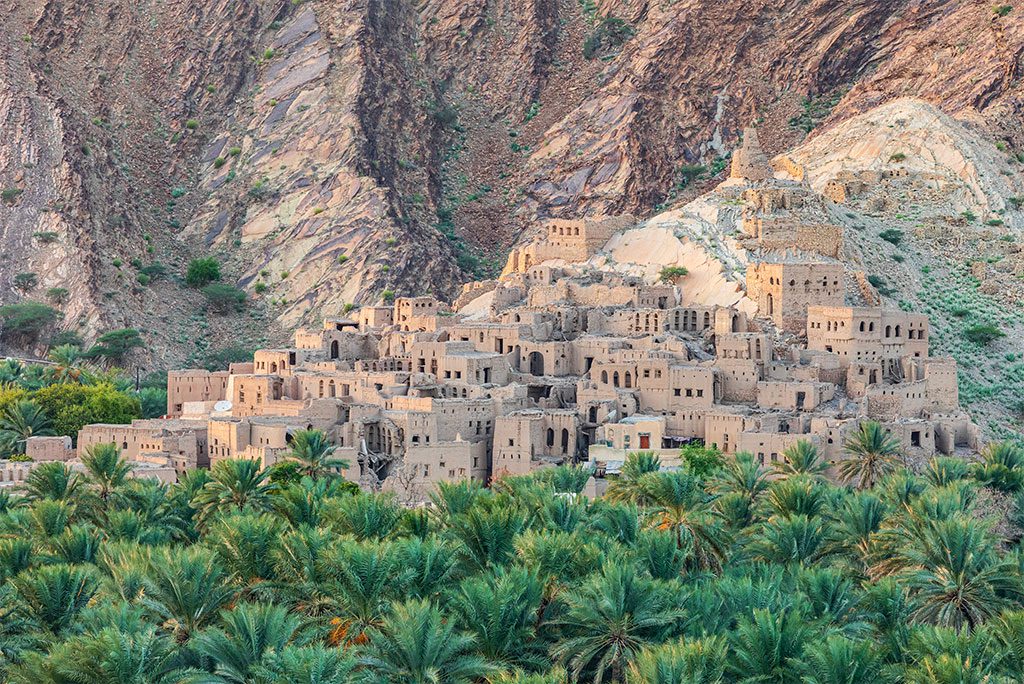The Sultanate of Oman is positioned on the southern tip of the Arabian Peninsula. Oman is a wonderful, off-the-beaten-path holiday destination with a wealth of amazing sights and urban centres. Muscat, the country’s capital, is where the vast majority of visitors end up, yet it has just a fraction of the attractions that make Oman special.
Oman should be on your list if you like desert vistas, majestic mountain ranges, ancient forts, and warm beaches in all seasons. A rundown of the top tourist attractions in Oman:
10. Misfat al Abryeen
Smaller villages like Misfat al Abryeen help portray Oman’s traditional culture, in contrast to the modern vibes of the country’s bigger cities. This hamlet in the mountains has stone structures in a variety of warm tones, making it appear more like an Italian mountain town than a place on the Arabian Peninsula.
Nonetheless, Misfat al Abryeen is a picture-perfect slice of Omani highland life. Banana trees and other tropical plants may be seen as you make your way up the mountain through a winding path. From atop a tower that overlooks the settlement, Misfat al Abryeen and the irrigated fields and dams in the area may be seen.
9. Masirah Island
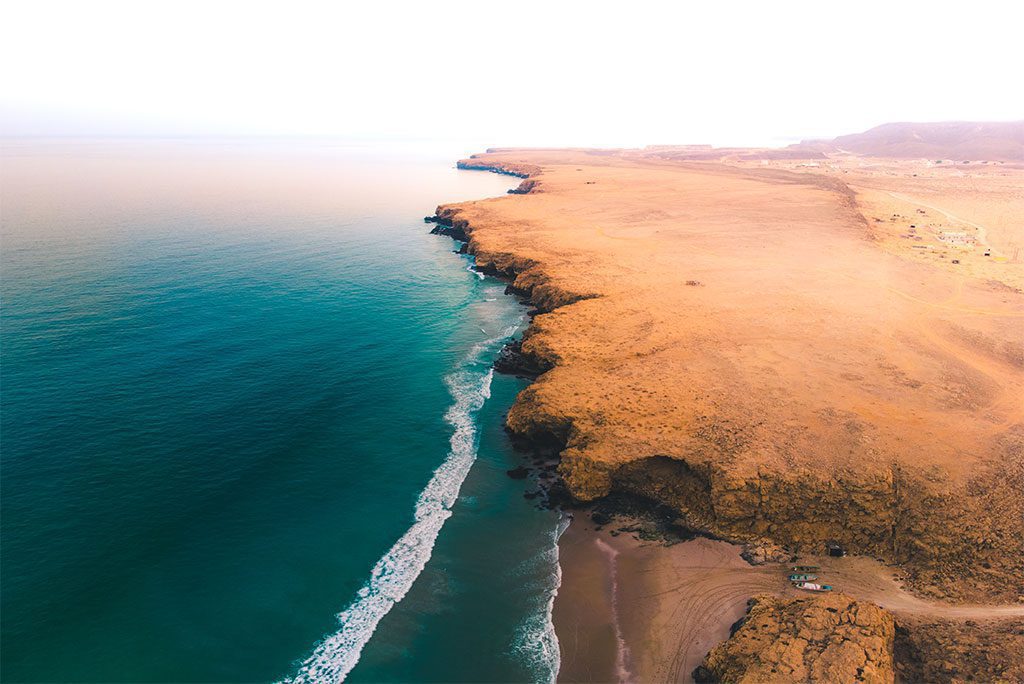
Explore the unspoiled beauty of Masirah Island, an oasis of serenity in Oman. Image source: Thomas Bartelds/Shutterstock.com
Masirah Island, located off the coast of Oman, is an unusual vacation spot known for its sun, sand, animals, and ancient history. An Omani air station is located on Masirah Island, but the island’s settlements are limited. This means you’ll encounter fewer people and have more opportunities to discover the area’s many hidden gems.
There are ferries that run often so that you may go to and from the mainland. Popular activities on Masirah Island include swimming, exploring the many shipwrecks nearby, and seeing the yearly influx of more than 30,000 hatchling turtles.
8. Bahla
Northern Oman is home to the city of Bahla, another amazing travel destination in Oman. Over the millennia, travellers have stopped in Bahla, a desert oasis. Bahla is only 25 miles (40 kilometres) separated from Nizwa, and Bahla also has a magnificent and ancient fort.
Bahla Fort was built in the 13th century when the Banu Nebhan tribe had a stronghold in the area. You can also view the city walls of Bahla, which are approximately seven kilometres in length and composed of adobe. Bahla is well known for its broad variety of handcrafted ceramics, making it an ideal destination for anyone looking to bring back unique and memorable mementos.
7. Salalah
Salalah, in southern Oman, is sometimes referred to as the “second city” to Muscat. Salalah has gained prominence in modern times as the birthplace of Oman’s current ruler, Sultan Qaboos, who has been in power since 1970. The spectacular Qaboos Palace and the Haffa, or Old Town, are also worth seeing on a trip to Salalah.
The Al Baleed Archaeological Site will take you even deeper back into antiquity. Do yourself a favour and pick yourself up some frankincense in the Haffa souk, as Salalah is well-known for its frankincense trade. The coastal area near Salalah becomes a verdant paradise with seasonal waterfalls and streams thanks to the incessant rain brought by monsoon clouds from India during the months of June and August.
6. Jebel Akhdar
Green Mountain, or Jebel Akhdar, is located in the Al Hajar Range. Don’t be misled by the name, and know that you won’t be seeing a conventional mountain peak. The highest peak in all of Oman is located in the Jebel Akhdar area, which is mostly composed of limestone.
The elevation allows for milder temperatures and greater agricultural development than in the desert below, although it still lacks the lush vegetation seen below. Now that it’s safe, hikers may enjoy the area’s stunning terraces and perhaps even find some fruit trees. Although hiking in Oman’s deserts may not seem enticing, it’s the ideal hobby in Jebel Akhdar.
5. Ras al Jinz
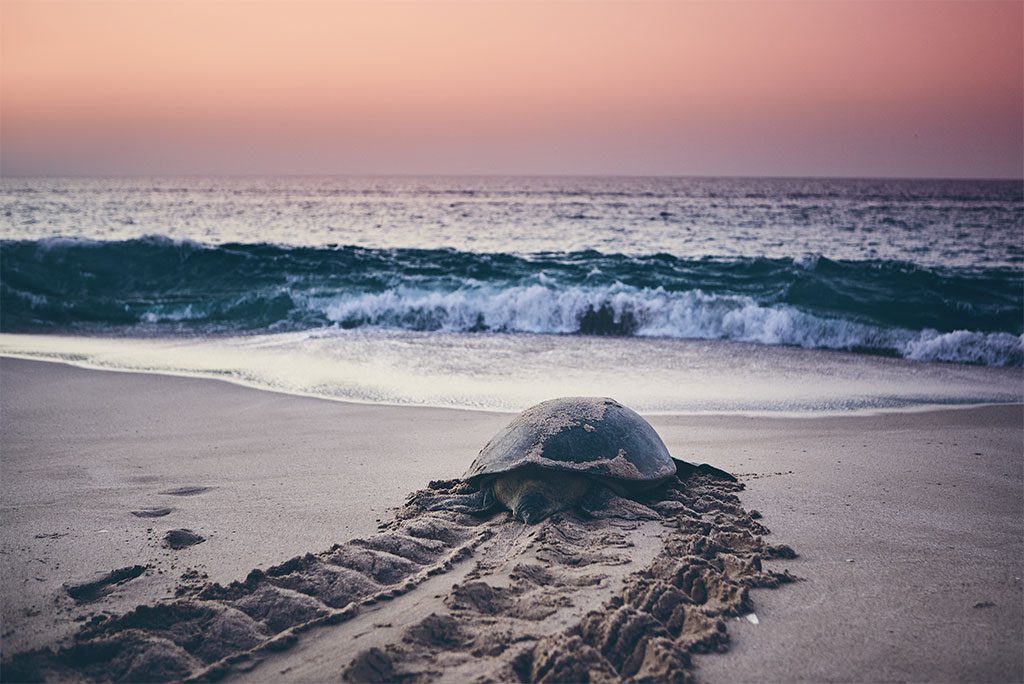
Witness the unique hatching site in Ras Al Jinz, Sultanate of Oman. Image source: Jaromir Chalabala/Shutterstock.com
Ras al Jinz, near the very point of Oman, is a protected area for the sea turtles that live in the Indian Ocean. There are turtle nests all around the beach, and if you go between May and October, you may observe the hatchlings making their way to the water.
While the turtle reserve may be seen as a day excursion from Muscat, the majority of tourists choose to stay the night at the resort and explore the area’s other attractions, such as the Turtle Visitor Center and Museum.
4. Musandam Fjords

Explore the stunning Khor Najd fjord nestled in the picturesque Musandam peninsula. Image source: Cristian Andriana/Shutterstock.com
Oman’s Musandam Peninsula is located in the nation’s far north, and it is cut off from the rest of the country by the UAE. This area is home to highland towns and seaside settlements that have thrived despite their relative isolation. Extending to the north, the Musandam Fjords are a sight to see.
Some of the best things to do in the Musandam Fjords include scuba diving, dolphin-watching aboard a traditional Omani dhow, and boat rides to explore the beaches and peaks coming up out of the ocean. One of the greatest spots in Oman to go if you’re a wildlife enthusiast is this sparsely populated area with its plethora of native animals.
3. Wahiba Sands
The dune fields, known as the Wahiba Sands, cover a large area in the middle of Oman. It is here that the Bedu people make their home, and it is a popular tourist destination for those looking to experience genuine, traditional Oman.
Join a trip that includes camel riding and desert camping to get a taste of the nomadic lifestyle of the Wahiba Sands. Many excursions to the Wahiba Sands begin in the city of Ibra, which is also the main entry point to the desert.
2. Nizwa
Nizwa became the capital of Oman in the sixth century and remained so throughout the seventh century. The city’s amazing fort, constructed in the 17th century by Sultan Bin Saif Al Ya’ribi, is today its most recognisable landmark. However, the fort’s history may be traced back to the ninth century in some locations. The massive cylinder tower in Nizwa fort is the attraction.
Fortresses with honey traps and oddly shaped windows provide fascinating defensive measures for the fort. The fort now functions as a museum, exhibiting everyday life in Oman during the 17th century. Nizwa is home to a unique goat market twice weekly in the city centre, in addition to a traditional souk (outdoor market).
1. Muscat
Muscat is probably going to be your first and last stop in Oman. There is something for everyone in this city, which is home to forts, palaces, museums, and marketplaces. Unfortunately, Qasr Al Alam Royal Palace is off-limits to visitors, but it may be seen up close from the port.
The palace is protected by the twin forts of Al Jalali and Al Mirani, both of which are now museums for visitors to explore. Most mornings, tourists who aren’t Muslim may visit the stunning Sultan Qaboos Grand Mosque and marvel at its giant crystal chandelier, marble wall panels, and the world’s second-largest Persian carpet.


